
Yogyakarta, sometimes called Yogya and spelled Jogyakarta, is a bustling town of some 500,000 people and the most popular tourist destination on the island of Java, largely thanks to its proximity to the temples of Borobudur and Prambanan. Yogyakarta is known as a center of classical Javanese fine art and culture such as batik, ballet, drama, music, poetry and puppet shows. It is also famous in Indonesia as a center of higher education. The touristic heart of Yogyakarta is the kraton, or sultan's palace.
For visitors to Indonesia seeking a little history and culture to go with their beach holiday, Yogyakarta is a must-see.
For visitors to Indonesia seeking a little history and culture to go with their beach holiday, Yogyakarta is a must-see.
Things to See and Do in Yogyakarta
Your visit could not come at a better time. On May 27, 2006, a Richter 5.9 earthquake struck the province of Yogyakarta, killing nearly 6,000 people and destroying 300,000 homes. Fortunately few historic sites suffered significant damage, but the area is still recovering economically. The money you spend as a tourist will help Yogyarkata get back on its feet.
Being one of the oldest cities in Indonesia, Yogyakarta has many historic buildings and monuments. The number one attraction is Sri Sultan Hamengkubuwono's palace, known in Indonesian as Kraton Ngayogyakarta.
The Sultan's Palace
Yogyakarta is the only province in Indonesia that is still formally governed by a precolonial sultanate, known as the Sultanate of Ngayogyakarta Hadiningrat. The current sultan, Sri Sultan Hamengkubuwono X, was elected as governor of the region by the provincial house of representatives in 1998.
Your visit could not come at a better time. On May 27, 2006, a Richter 5.9 earthquake struck the province of Yogyakarta, killing nearly 6,000 people and destroying 300,000 homes. Fortunately few historic sites suffered significant damage, but the area is still recovering economically. The money you spend as a tourist will help Yogyarkata get back on its feet.
Being one of the oldest cities in Indonesia, Yogyakarta has many historic buildings and monuments. The number one attraction is Sri Sultan Hamengkubuwono's palace, known in Indonesian as Kraton Ngayogyakarta.
The Sultan's Palace
Yogyakarta is the only province in Indonesia that is still formally governed by a precolonial sultanate, known as the Sultanate of Ngayogyakarta Hadiningrat. The current sultan, Sri Sultan Hamengkubuwono X, was elected as governor of the region by the provincial house of representatives in 1998.
The sultan's palace, or kraton, encompasses the main palace, the sultan's residence and grounds, and a large residential area where the sultan's many servants used to reside. The kraton was completed in 1756. Notable attractions in the kraton complex include:
The Main Court and the Residence. The Main Court showcases the grandeur of the sultan's monarchy, while in the Residence you'll see the private, but no less luxurious, lifestyle of the royal family.
The Sultan's Carriage Museum. This museum houses the sultan's horse-drawn carriages, including two beautiful carriages imported from the Netherlands, known as the Golden Carts.
The Main Court and the Residence. The Main Court showcases the grandeur of the sultan's monarchy, while in the Residence you'll see the private, but no less luxurious, lifestyle of the royal family.
The Sultan's Carriage Museum. This museum houses the sultan's horse-drawn carriages, including two beautiful carriages imported from the Netherlands, known as the Golden Carts.
Taman Sari. Also known by the Dutch name waterkasteel (water castle), this is a partly ruined complex built as a pleasure garden by the first sultan in 1765. One of the bathing pools was dedicated to the sultan's harem, and he had a tower overlooking the area so he could take his pick of the women below.
Siti Hinggil Selatan. This palace is rarely used for formal occasions anymore. You can see wayang kulit, Javanese shadow puppetry, performed on weekend evenings.
Masjid Gede Kauman, one of the oldest and largest mosques in Yogyakarta. Located on the west of Alun-alun Utara, the palace square, this mosque is where the sultan performs his religious rites and ceremonies. Non-muslim visitors should wear modest clothing and abide by mosque rules.
Siti Hinggil Selatan. This palace is rarely used for formal occasions anymore. You can see wayang kulit, Javanese shadow puppetry, performed on weekend evenings.
Masjid Gede Kauman, one of the oldest and largest mosques in Yogyakarta. Located on the west of Alun-alun Utara, the palace square, this mosque is where the sultan performs his religious rites and ceremonies. Non-muslim visitors should wear modest clothing and abide by mosque rules.
The Palace Grounds,
Alun-alun utara, the northern palace grounds, was originally used for the sultan's army training and hence closed to public, but the area was opened to the public during the reign of Sri Sultan Hamengkubuwono IX. Now, alun-alun utara is the venue for the quarterly parade known as Garebeg, in which the sultan's servants place huge cone-shaped offerings of food on the alun-alun utara. After the parade, attendees scramble to get scraps of these offerings, as they believed these gifts from the sultan bring good luck.
Prior to the month of Indonesian month of Maulud, a public fair is held in alun-alun utara for 30 days. This fair is very popular and offers many kind of goods ranging from traditional handicrafts to melamine dishware from China. A unique snack sold in this event is galundeng,, or deep-fried dough similar to a donut.
Alun-alun utara, the northern palace grounds, was originally used for the sultan's army training and hence closed to public, but the area was opened to the public during the reign of Sri Sultan Hamengkubuwono IX. Now, alun-alun utara is the venue for the quarterly parade known as Garebeg, in which the sultan's servants place huge cone-shaped offerings of food on the alun-alun utara. After the parade, attendees scramble to get scraps of these offerings, as they believed these gifts from the sultan bring good luck.
Prior to the month of Indonesian month of Maulud, a public fair is held in alun-alun utara for 30 days. This fair is very popular and offers many kind of goods ranging from traditional handicrafts to melamine dishware from China. A unique snack sold in this event is galundeng,, or deep-fried dough similar to a donut.
More Sightseeing in Yogyakarta:
Tugu Monument. A well-known landmark located in the center of downtown Yogyakarta. Built by Sri Sultan Hamengkubuwono VI in the 19th century, the top spire was originally a round sphere representing the universe. During the Dutch colonial era, the spire was replaced with a golden cylinder.
Benteng Vredeburg. A Dutch fort dating from 1765 located in front of Gedung Agung (President's Palace). It's a great example of Dutch colonial architecture, complete with a moat and ramparts overlooking the sultan's palace.
Kotagede. Before Indonesian independence in 1945, Kotagede was the central economic district of Yogyakarta, as it held the largest marketplace and was home to many wealthy batik merchants. Although some ancient buildings have been modernized or replaced with newer buildings, Kotagede remains a prime example of ancient Javanese architecture and city planning. Be sure to check out the local silver handicrafts.
Imogiri, southwest of town, is the royal graveyard complex of the Yogyakarta and Surakarta royal families.
Kotabaru, which was a residential area for Dutch officials, has a few historic homes as well as a colonial-style church, a monastery and a stadium.
Shopping
A variety of high-quality handicrafts are available throughout Yogyakarta, including traditional wayang puppets, sculpture, ceramics and silverware. Yogyakarta is also the home of batik fabric, which is sold everywhere. Countless handicrafts from outside Yogyakarta can also be found. For example, don't be surprised if you come across souvenirs from Bali or Asmat, often at better prices than those on the islands. A modern, growing city, Yogyakarta has several stylish malls and a trade center that offers interesting goods and services at a reasonable cost.
A variety of high-quality handicrafts are available throughout Yogyakarta, including traditional wayang puppets, sculpture, ceramics and silverware. Yogyakarta is also the home of batik fabric, which is sold everywhere. Countless handicrafts from outside Yogyakarta can also be found. For example, don't be surprised if you come across souvenirs from Bali or Asmat, often at better prices than those on the islands. A modern, growing city, Yogyakarta has several stylish malls and a trade center that offers interesting goods and services at a reasonable cost.
Pasar Beringharjo. Literally meaning "slanted land," Beringaharjo is the largest traditional marketplace in Yogyakarta. The vendors sell many kind of goods, ranging from basic household items to handicrafts. Haggle furiously!
Eating
Originally, Yogyakarta dishes were known for their sweetness. However, as more and more people move to Yogyakarta, the city is beginning to see greater food diversity. Now you can find many kinds of interesting foods, ranging from sweet to spicy to fiery hot, and sometimes a fusion of other cuisines such as Chinese or Western.
The following dishes should be on every traveler's agenda:
Gudeg, a curry of jackfruit, chicken and egg served with rice, is the most famous local dish. A syrupy liquid in various shades of brown, gudeg doesn't look particularly appetizing, but it can be tasty if done right.
Ayam Goreng Mbok Berek (Mbok Berek's Fried Chicken). Fried free range chicken with mild garlic and coriander flavor served with crunchy crackers.
Nasi Langgi, locally known as Sego Langgi (Langgi Rice). Warm rice served with various side dishes.
Kipo, bite size snacks made of green colored tapioca dough filled with sweetened grated coconut.
Jadah Tempe, sandwich of rice cake and sweet beancake
Es rujak or rujak es krim, a fruit salad made from mangos, papayas, apples, pineapples, cucumbers etc., mixed with palm sugar, lime juice, salt, chillies and (of course) ice cream (es krim). All flavors (sweet, sour, bitter, spicy, salty) in one plate.
Borobudur
Borobudur temple is about 40 minutes north of Yogyakarta by car. Built over a period of some 75 years in the 8th and 9th centuries by the kingdom of Sailendra, Borobudur is the largest Buddhist monument in the world.
Borobudur temple is about 40 minutes north of Yogyakarta by car. Built over a period of some 75 years in the 8th and 9th centuries by the kingdom of Sailendra, Borobudur is the largest Buddhist monument in the world.
Constructed out of an estimated 1,600,000 blocks of volcanic stone dredged from the river and assembled solely by human labor, the nine-terraced temple is a representation of the transition towards nirvana and is famed for its 1,500 intricately carved reliefs, covering a total length of four miles end-to-end. The volcanic Mount Merapi, one of the most active volcanoes on Java, can be seen steaming on the horizon directly north of the site.
The first archaeological study of the site was initiated in 1814 by Sir Stamford Raffles, the British founder of Singapore. Restored in 1907, the monument suffered from neglect and war and was again heavily restored in the 1970s under the guidance of UNESCO, which designated Borobudur as a World Heritage Site. The massive restoration process involved the removal and refurbishing of over one million blocks, rebuilding the foundation and adding drainage systems.
Borobudur consists of a single stupendously large structure, which can be divided into layers as follows:
*The platform at the base of the structure, which was clearly added on later and hides some reliefs, is of uncertain provenance and function. The main theories are that the platform was added to censor reliefs depicting earthly desires or - rather more likely - to buttress the subsiding structure and prevent it from collapsing. A section of the platform has been excavated at the southeast corner, showcasing some of the hidden reliefs underneath.
*The platform at the base of the structure, which was clearly added on later and hides some reliefs, is of uncertain provenance and function. The main theories are that the platform was added to censor reliefs depicting earthly desires or - rather more likely - to buttress the subsiding structure and prevent it from collapsing. A section of the platform has been excavated at the southeast corner, showcasing some of the hidden reliefs underneath.
*The bulk of the structure consists of four square terraces connected by steep staircases. Each terrace has reliefs in two layers on both sides, recounting the story of the Buddha's past lives and his enlightenment. The "correct" way to view the reliefs is to start from the east gate (the main entrance) and circulate clockwise.
After the square terraces the structure suddenly opens up to reveal the final four circular terraces. Comparatively plain and unadorned, there are no more reliefs here, just several hundred domes housing half-hidden Buddha statues (many headless, some lost entirely).
*The peak of the structure is a central stupa. The two chambers inside the stupa are empty, and it is unclear whether they were empty from the beginning as a representation of nirvana, or whether they originally contained now-lost statues.
After the square terraces the structure suddenly opens up to reveal the final four circular terraces. Comparatively plain and unadorned, there are no more reliefs here, just several hundred domes housing half-hidden Buddha statues (many headless, some lost entirely).
*The peak of the structure is a central stupa. The two chambers inside the stupa are empty, and it is unclear whether they were empty from the beginning as a representation of nirvana, or whether they originally contained now-lost statues.
On Waisak--Buddha's birthday (held on the night of the full moon in May)--an elaborate and colorful multi-day Buddhist festival is held at Borobudur, culminating in a candle-lit, five mile procession by monks in saffron robes from the village of Mendut to Borobudur.
Prambanan
Prambanan is a collection of massive Hindu temples (candi) built by the 10th century Mataram Kingdom, rulers of central Java and defeaters of the Sailendra Dynasty. A UNESCO World Heritage Site, in most any other country constructions on the scale of Prambanan would be quickly designated as a national symbol, but in Indonesia they are somewhat overshadowed by the even more awe-inspiring bulk of Borobudur just next door. The two sites are quite different in style though, with Prambanan being a collection of sharp, jagged pyramids instead of the vast horizontal bulk of Borobudur, and both are well worth a visit.
Prambanan is a collection of massive Hindu temples (candi) built by the 10th century Mataram Kingdom, rulers of central Java and defeaters of the Sailendra Dynasty. A UNESCO World Heritage Site, in most any other country constructions on the scale of Prambanan would be quickly designated as a national symbol, but in Indonesia they are somewhat overshadowed by the even more awe-inspiring bulk of Borobudur just next door. The two sites are quite different in style though, with Prambanan being a collection of sharp, jagged pyramids instead of the vast horizontal bulk of Borobudur, and both are well worth a visit.
Visiting Prambanan
About 10 miles from Yogyakarta, the main site of Prambanan contains four temples scattered about a large, landscaped park. Note that some parts of the temple complex are still closed off and undergoing restoration following the May 2006 earthquake.
Candi Lara Jonggrang, or simply Candi Prambanan, is the largest and most-visited of the temples, just to the left of the entrance. While there were 232 temples originally built, most have long since crumbled and the main remaining attractions are the six temples of the central court, richly decorated with carved reliefs. Three of them, known as the Trisakti ("three sacred places"), are particularly important:
Candi Shiva, dedicated to Shiva the Destroyer, is the largest of the six, rising to a height of 147 feet. There are fine reliefs in its forecourt and four chambers with statues. The largest chamber, to the east, contains a statue of Shiva himself, while the south has the sage Agastya, the west his son Ganesh (the elephant-headed) and the north his wife Durga. Durga is also known as Lara Jonggrang ("Slender Virgin"), a legendary beautiful princess turned to stone.
About 10 miles from Yogyakarta, the main site of Prambanan contains four temples scattered about a large, landscaped park. Note that some parts of the temple complex are still closed off and undergoing restoration following the May 2006 earthquake.
Candi Lara Jonggrang, or simply Candi Prambanan, is the largest and most-visited of the temples, just to the left of the entrance. While there were 232 temples originally built, most have long since crumbled and the main remaining attractions are the six temples of the central court, richly decorated with carved reliefs. Three of them, known as the Trisakti ("three sacred places"), are particularly important:
Candi Shiva, dedicated to Shiva the Destroyer, is the largest of the six, rising to a height of 147 feet. There are fine reliefs in its forecourt and four chambers with statues. The largest chamber, to the east, contains a statue of Shiva himself, while the south has the sage Agastya, the west his son Ganesh (the elephant-headed) and the north his wife Durga. Durga is also known as Lara Jonggrang ("Slender Virgin"), a legendary beautiful princess turned to stone.
Candi Brahma, to the south, has a statue of Brahma the Creator inside.
Candi Vishnu, to the north, tells the story of Vishnu's avatar Krishna and has a statue of Vishnu the Preserver inside.
Opposite the three large temples are three smaller temples originally dedicated to the vehicles of the gods. Only the statue of Nandi, Shiva's bull, has survived.
Candi Vishnu, to the north, tells the story of Vishnu's avatar Krishna and has a statue of Vishnu the Preserver inside.
Opposite the three large temples are three smaller temples originally dedicated to the vehicles of the gods. Only the statue of Nandi, Shiva's bull, has survived.
Candi Lumbung and Candi Bubrah, two Buddhist temples, are located several hundred feet further north.
Candi Sewu, a large Buddhist temple complex meaning "one thousand temples", is less than a mile north of the entrance gate and contains a large central temple surrounded by a cluster of smaller ones. The sheer size of the recently renovated and intricately decorated central temple is impressive, but the statue niches are all empty.
Candi Sewu, a large Buddhist temple complex meaning "one thousand temples", is less than a mile north of the entrance gate and contains a large central temple surrounded by a cluster of smaller ones. The sheer size of the recently renovated and intricately decorated central temple is impressive, but the statue niches are all empty.
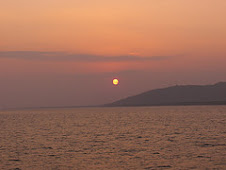
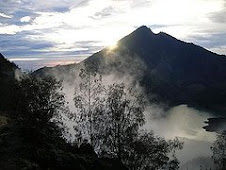
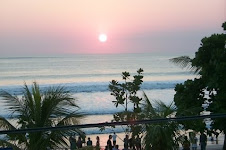
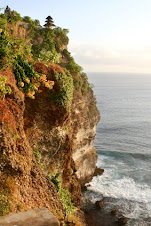
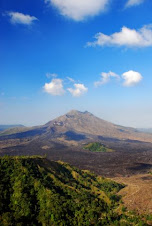


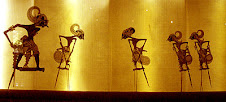


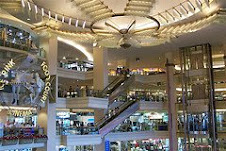
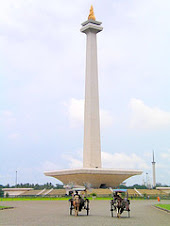
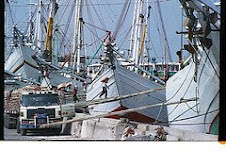
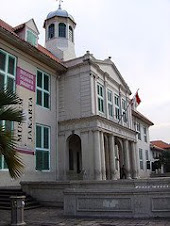
.jpg)

No comments:
Post a Comment